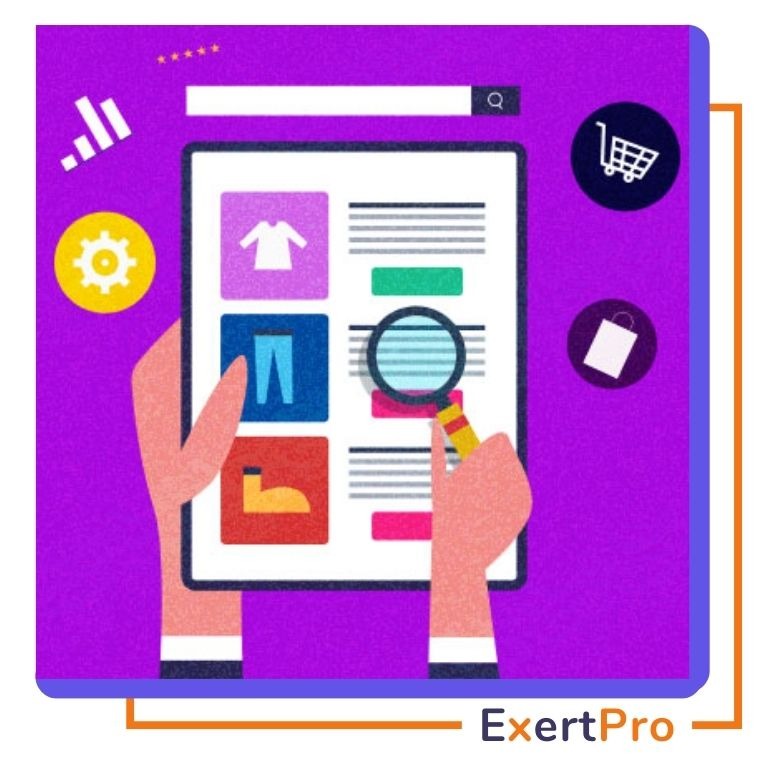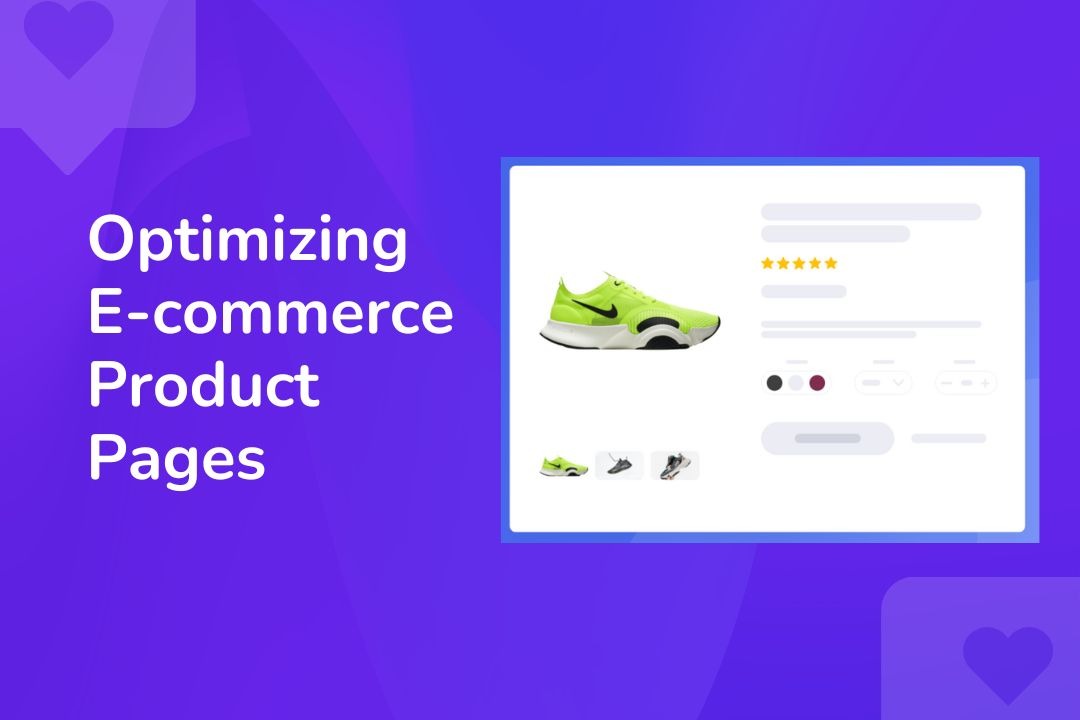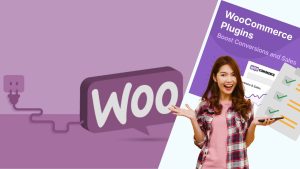High-converting product pages are a must for running your successful eCommerce business. E-Commerce product page optimization is essential as it is the money maker. It converts the visitors into customers by convincing them that the product will meet their requirements and is worth their money and time.
The tips for creating high-converting listings are keyword research, title and Meta description optimization, and providing the product’s entire information. The other tips are using CTA, adding customer feedback, using structured data for product pages, reducing page loading time, optimizing product URLs, etc.
Customers click on the “Add to Cart” option not by seeing only your product quality and price. Rather the well-optimized product page greatly influences their purchasing decision and encourages the visitors to buy the products.
Today’s guide will take you through every details of e-Commerce product page optimization. So start going through this article and read it till the end!

What Contains The Best eCommerce Product Page?
While analyzing your eCommerce product page, one question that comes to mind is, what makes a great page? The answer is nothing beats the simplicity of your product page. A great eCommerce product page is user-friendly and simple.
This simple page’s main goal is to provide the right information to your ideal client. Ensure that your eCommerce product page will help your customers buy and show your product’s best features.
The eCommerce product page’s primary goal is to build user confidence by providing the necessary information. A great eCommerce product page has the following main components:
- Product
- Copywriting
- Brand
- User experience
- Great page design
While building an eCommerce product page for your business website, ensure it has every component mentioned above. How to optimize a product page to know it? You can watch this video:
Tips For E-commerce Product Page Optimization
Your product’s First impression is important as you won’t get a second chance to build your customer base next time. The first impression works best in meeting new people and attracting potential clients.
Optimizing your e-commerce product page is crucial to create a greater impression for the first time. Usually, your customers meet first with your products through the product page. So, the first meeting is your chance to build your potential customer’s confidence and influence their purchasing decision.
You will experience its results through your page’s conversion rate improvement and sales growth. However, to support your eCommerce store’s success, you can do product page optimization in the following ways:
1. Keyword Research
Today’s product market is highly competitive. Your competitor also sells the same product as yours. Now the question is how your products will stand out from the crowd or how your customers will find your products. The simple answer is to conduct keyword research for your eCommerce product page.
Your customers can easily discover your products and services by keyword. Thus it’s important to conduct detailed keyword research. The keywords help to determine which product pages should rank high in the search results.
Find out which topics your customers are looking for and focus on that product topics. Emphasize the relevant products and make sure the keywords will drive more conversions. Also, ensure enough transactional intent on your product page.
Optimize your landing page for the searchers who instantly buy products from your site. You can use the keyword suggestion tools to find out the best keywords. These tools also help to find out the keyword’s following core parameters:
- Keyword score
- CPC
- Search volume
- Competitor’s keywords analyze
- Target keywords
- Identify the product page keywords etc.
2. Titles & Meta Descriptions Optimization
After researching the keywords for your eCommerce product page, your next task is to optimize the titles and Meta description. It’s more likely to locate the keywords strategically on your product page.
Optimize your product page by adding the keywords in the tags and Meta descriptions. However, the title and Meta description on your product page should be as follows:
- Unique
- Short
- Have the target keywords.
You can insert the keywords with your brand name at the title’s front. It will help to reach the maximum effect. If you add numbers or symbols in the Meta description, it will help to draw more clicks. For example, see the image below:

Ensure that your product page’s title and Meta description is compelling and informative to humans and Google robots. Also, on your product’s description, try to add more selling points, including the following:
- Product name
- Brand
- Price
- Model
- Specifications
- Key features
- Other crucial information
For easy accessibility, you must add keywords in the title, and a Meta description is important. But we discourage you from doing keyword stuffing. It is both ineffective and unwelcoming.
3. Provide The Product’s Complete Information
While you visit any product page, what do you look at first? Obviously, it’s price, size and relevant features, right? So, think from the customer’s perspective.
When customers scan your product page at first glance, they want to see your product’s price and size. For this reason, providing your product’s all relevant information is essential.
Lengthy product descriptions aren’t eye catchy. Rather the users feel bored reading long illustrations. So we recommend you use tables or charts to illustrate your product’s dimensions. Seeing the table, the users can easily find their questions and answers.
While providing the product description, try to add a personal and polite touch. Explain politely to your users why they should choose to purchase your products. Also, you must convince your clients by describing that your product is best than your competitors.
4. Add High-Quality Product Image
For your eCommerce store’s success, one of the crucial elements is adding high-quality product pictures. Add a clear, well-lit picture that is faithful to reality. Also, to highlight your product use a white background in its photos. Most importantly, keep consistency in presenting your product through photos.
According to research, 34% of consumers, before buying anything, check the product’s different photos. So even if your product is of good quality, it won’t sell with a low-quality image. The customer online can’t touch, try or feel the product. Therefore they depend on the product’s specific photos in making the decisions.
Considering the importance of product images, we recommend you add multiple high-quality images of a single product. Show your product’s close-up details to your customers from different perspectives.
Moreover, to emphasize your product, you can prepare and add its 360 degrees of vision. The engaging product visuals will encourage more customers to buy it.
5. Decide On A (CTA) Clear Call-To-Action
The well-choose CTA button lets your product page visitors quickly become your customers. The most common call-to-action button is “Buy Now.” But you can also use different options on your site.
The CTA button brings the best results to your site. CTA button’s some more examples are “I Want It,” “Shop Now,” and “Checkout.” You can experiment with your CTA button’s size and colors. Create it in such a way that it becomes different from the background.
Also, you can add simple animations on your product page, like gentle flickering, pulsing etc. All these are effective in grabbing your page visitor’s attention.
6. Add Customer Feedback
How will your visitors or potential customers know your product is trustworthy? The simple answer is that by seeing your customer’s feedback, reviews and ratings, they will learn about your product quality.
Your client’s word of mouth is the most effective marketing strategy than anything else. According to research, 85% of customers trust other clients’ online reviews and recommendations. People before buying anything, always check out other customers’ opinions about the product.
Adding your business product’s reviews and ratings can help to gain your shopper’s trust. Also, you can incorporate your loyal customer’s reviews into the page structure. Or, on each product page, enable the reviews and rating sections.
Moreover, add customer photos if they share any to enhance trust and conversions. Positive reviews are undoubtedly great for your business. But you must handle your customer’s negative reviews professionally.
If anyone gives bad reviews, try to reach out to them to solve their product’s problems. Ask politely what problem your customers are facing, and listen to them. Finally, offer them solutions that will reduce their issues.
7. Ensure Standard Product Page Structure
Product pages don’t allow you to show your creativity in huge amounts. Show less creativity and include all standard elements on your product page. Ensure the product page will provide a seamless buying experience to the buyers.
Place your brand’s logo on the product page’s front. Make sure at first glance, the users will identify your logo. Also, ensure the user can navigate your website’s other pages easily. For example, you can include product thumbnails on the page.
It will show the shoppers that they are on the correct page. Apart from all these, you must follow all the general instructions. On your product page, include the following:
- Product Title
- Full description
- CTA button
- Breadcrumbs
- Shipping buttons
- Reviews
- Additional information
- Certificates
8. For Product Pages, Use Structured Data
Search engines can easily examine the image and content on your product pages through structured data. The structured data make the content display accurately as rich snippets.
Ultimately it enables your product pages to drive more clicks, leads, impressions and sales. Using structured data, highlight your product page’s prices, ratings or reviews.
9. Reduce The Page Loading Time
If you click on a website and it takes a huge time to load, will you wait until its loading time becomes over? Or will you quickly click on another site’s link?
Most users won’t wait to finish the loading time and will click on your competitor’s site. So hopefully, now it’s clear why your site’s fast loading is important.
Fast loading time greatly affects your customer’s conversion and experience. If any page takes five seconds or more to load, 37% of visitors won’t wait and bounce. So, it’s clear that high page speed is another crucial factor that affects Google rankings.
For all these reasons, we recommend you create light product pages. You can use the PageSpeed insights to identify your page’s loading time. This tool will also guide you about loading time reduction.
10. Add Product Price & Shipping Cost
Any customers take the product purchasing decision by seeing its price. So it’s obvious to add your product’s total price on its page. Make the price clear to the users so that they can easily make the purchasing decision. Dedicate one tab to explaining product price.
And dedicate another tab for explaining the shipping options. Add the countries on the list where you will send your products. What shipping cost you charge is mentioned on the product page, and be transparent with your customers.
Include all the available shipping options that you are offering to your customers. You must highlight the information on your product page’s visible place if you offer free shipping.
If the price of your product is relatively expensive, then do the following to justify your product’s price:
- Highlight the product material information
- Add the place of the product’s origin
- Highlight the invested time and effort in product production
Offer your customers the best quality product at the lowest price and do your best to justify the value.
11. Product URLs Optimization
The well-structured and keyword-friendly URLs play a crucial role in Search Engine Optimization. The well-optimized product page URL should be:
- Short
- Use subfolders and
- Written in lower-case
Remove all the unnecessary things from the URL structure and avoid the dynamic elements.
12. Mobile Optimize Your Product Pages
Today global eCommerce sale’s ¾ are taking place through mobile. So, it means product page optimization for mobile devices is necessary for your eCommerce store’s success. Users save time by purchasing products through their mobile. Therefore it’s mandatory to focus on your product page speed.
If your product page load slowly, the users won’t feel comfortable shopping using their mobile. So focus on the page speed. Secondly, ensure that using the mobile, your customers will find your product’s complete information.
Make sure anytime, anywhere the users can shop from your product page using mobile. Finally, focus on the checkout process optimization. Ensure that users can complete their shopping on mobile by easily entering their personal and payment information.
However, to offer your customers a better shopping experience, you can develop a shopping app for your business. Having your business’s shopping app will increase the eCommerce product page conversions and provide a better user experience.
13. Add Trust Signals
Customers tend to shop from trustworthy pages or sites. Your site can experience an immense conversion rate by earning your visitor’s trust.
The cues on your website will signal to your potential customers that your business is legitimate and reputable. And these are called trust signals. However, to add trust signals on your website, you can follow the ways below:
- Add your company address, email and phone number: If your customers have any concerns or questions about your product, how will they contact you? Add your company’s contact details and address on your website to ensure their easy reaching out.
- Create Legal Pages: You must include legal pages on your site to increase your customer’s trustworthiness. The legal pages are “Terms & Conditions” or “Privacy Policy” pages.
- Display Trust Badges: Customers often fear entering their credit card and financial information online due to data breaches. So, to gain your customer’s trust, you must ensure their data is secure online.
Displaying trust badges ensure your potential customers that your site’s transactions are secure and legitimate.
14. Simple Page Design
Less is more in terms of your product page design. Compared to the simple pages, the complex pages look less beautiful to the customers. On your product page, you must add the product’s high-quality photos. But don’t cramp it with unnecessary text and images.
Don’t assume that adding unnecessary text and images on your product page will help your customers learn more about it.
Actually, all these delay your customer’s purchasing process by distracting them. Moreover, compared to the reverse text, the customers can read better the black text on a white background.
15. Upsell & Cross-Sell
You can double your revenue by upselling and cross-selling your business’s complementary products. Avoid adding too many options on your product pages, as it confuses your visitors. Now what do the upsell and cross-sell mean? Let’s take a quick look at it.
i. Upsell
Your price points can vary when you sell high-end versions or larger-size products. The high-end products cost a bit more as it offers better features. Consider what features will benefit your customers.
Avoid adding many products, as it can create friction. Strategically think when adding upsell products on your eCommerce product page.
ii. Cross Sell
The products that are associated with selling other products for them, the cross-selling opportunities are excellent. Customers can instantly add complementary accessories to their cart if you cross-sell products.
16. Address & Focus On Customer Concerns
Product page optimization’s one important aspect is understanding the inherent relations between your customers and your product. Understand what motivates your customers to buy a product and what factors delay purchasing.
After discovering your customer’s concerns focus on it to fulfill their requirement. Find out how to convince your customers and, through research, challenge your assumptions. All these are crucial for increasing your product page’s conversion rate.
Start by focusing on what motivates your customers to buy your products. Also, address their objections and concerns about your product. Addressing your customer’s focus increases conversion.
You can set your customer’s better expectations by addressing their common concerns. Increasing your customer’s concern will reduce the product’s return also. Ultimately it will help to reduce your customer’s frustration about your product.
17. Activate Live Chat On Key Product Pages
Live Chat has the highest customer satisfaction level compared to all support channels. Customers love the live chat option because they get fast and multitask answers. And the Live Chat ensures the most efficient use of the customer’s time.
If the potential customers have any questions, they can quickly get its answer through the targeted live chat. It is effective, just like your product page’s FAQ section. Your customer can make an informed purchasing decision through the Live Chat service.
Your customers can receive their answers through the conversation, increasing their satisfaction level. Live chat on specific product pages during high-traffic periods is a good idea. It allows your potential customers to know what is quickly and easily accessible.
The live chat option makes your business more trustworthy to the users. Your users can get peace of mind by seeing the available live chat option even if they don’t use it.
18. Prominently Display Guarantees & Social Proof
A reputable seal of approval or the trust badge on your product is a good shortcut for establishing its social proof. If your product has any important characteristics, certifications, safety or legitimacy, you must include it on your product page.
Writing all these social proofs, certifications, or characteristics in your product description is easy. The product badge helps your product to stand out from the competitor. Therefore you must use it on your site.
These badges quickly enable the customers to check their list’s bottom line concerns. However, you may sometimes require an official certificate or permission to use badges or specific seals on your eCommerce product pages.
This video will give you more details about product page optimization, so watch it:
Frequently Asked Questions
What Are The Best Practices For eCommerce Businesses to Optimize Their Product Pages?
To optimize product pages, use clear and big images and make page navigation easier. Also, add prominent CTA, compare prices, add customer feedback, reviews etc.
What Are Three Must Have for Increasing the Conversion Rate On A Product Page?
Increase your product page’s conversion rate, optimize your website speed, use product images and videos and include customer reviews.
How Do You Optimize A Product Page?
For your product page optimization, enhance page layout, refine product images, include product variations and use better product titles. Also, offer a product size guide and clear product shipping and return policy.
Final Words
E-Commerce product page optimization is essential for ensuring your online store’s success. Your customer decides to purchase a product or leave your online store on your product page. So, if you want to succeed in your business, you can’t ignore the importance of a well-optimized product page.
We have discussed all details of e-Commerce product page optimization. Now, if you have any further queries, you can comment. ASAP, we will reply to you!





